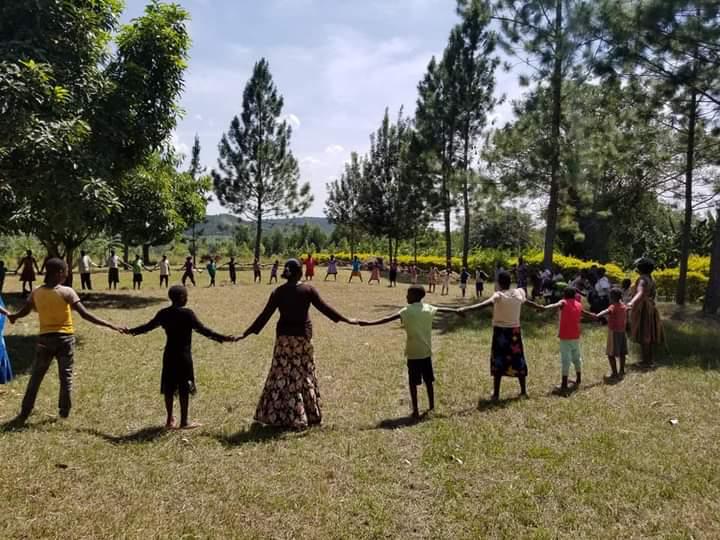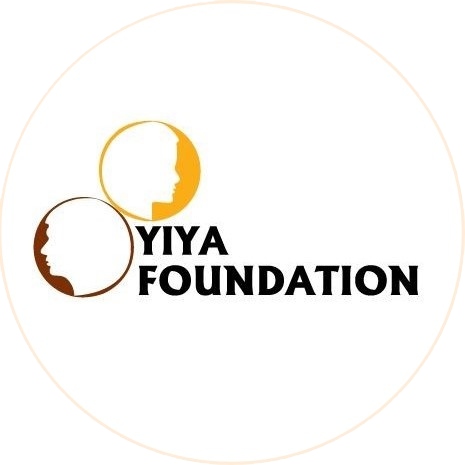
Play It Out (PIO)
This program was designed for the children category of YIYA Foundation’s target group, however, it does not exclude the rest of its target groups.
Play is often referred to as children’s work. It is how children organize and make sense of the world. Playing helps children work through tensions in their lives especially the vulnerable children, for example, traumatised children, refugees, children living with disabilities, orphans, survivors of abuse, etc.
Playing helps bring out children’s creativity. Play is also seen as building vocabulary, concentration, flexibility, and empathy, among other qualities.
Children on this program either engage in active play like riding bikes, climbing trees, or skipping rope, sports, music, dance and drama, or in quieter play like drawing pictures, playing board games, and constructing elaborate structures.
In this way children gain experience, build their strength and imagination, taking turns, and following rules.
Playing is also an important part of early childhood as it promotes cognitive, social, and emotional development in children.
Play-based learning helps children develop social skills, motivation to learn, and even language and numeracy skills.
Taking initiative, focused attention, and curiosity about the world are all a part of play. Children are naturally wired to do the very thing that will help them learn and grow.
Playing still continues to be important for adults just as it was as in their early days of life especially in moment when they suffer abuse, are traumatised, or survive an odious event. Play is therapeutic and can be used to build confidence which is important in opening up to others for help.
Activities in PIO
This helps to develop coordination. A great form of exercise and skills
development. Most music genre can also provide listeners with passive therapeutic relief.
Such as football, netball, basketball, volleyball, tennis, etc. These develop hand to eye, legs to eye coordination, depth perception, reflexes and rule setting, especially among children, but also provide the greatest forms of exercise and active therapeutic relief for grownups.
This activity for children consists of making up a story using templates of the story characters. It is aimed at stimulating a child’s imagination to create new ideas and original solutions in defined situations. Also through storytelling young people gain insights that lead to behavioural change and improvements in the quality of their lives. So the program provides an opportunity, through gatherings for strength-based storytelling, for young people to tell and listen to their peers and other young mentors as a form of therapy.
Everybody has a story to their life, therefore, young people will listen and tell their individual stories and in some way it helps them to address challenging experiences either in their childhood or adult life, offering them an opportunity for reflection time and gaining new insights for them to emerge with new possible life resolutions and commitment to them.
Building things using clay, sand, card boxes, scissors, pencils, markers etc helps develop imagination and planning skills. It help participants to develop their creative skills and imaginations, while Drama on the other hand builds confidence and exposes raw talent.
These creative arts together with drama are a creative way to provide an opportunity for youth to express emotions within an atmosphere of comfort and relaxation. The young people get a unique opportunity to individually or as a group to express themselves creatively while dealing with stress, grief and loss.
Creative arts and drama can produce a powerful release of feelings that can be healing to the mind, body and spirit. Through these activities this program offers encouragement and guidance. Emphasis is placed on the artwork rather than the final product meaning artistic talent or prior training in these activities is not a requirement from the participant.
The common goals of these activities are therapeutic – for relaxation and stress relief, to provide insight on emotions, and to encourage more communication and action. The therapeutic experiences include song writing, music performances, vocal or musical improvisation.
Similarly, no musical background or experience is necessary to enjoy the many benefits of creative arts and drama which include: positive change in mood, relation, peace and comfort with oneself, anxiety and stress reduction, self-confidence, social interaction with caregivers, family and community members, and finally, memory recall, reminiscence and satisfaction with life.
These are (young) adult break moments out of their ordinary routine at work or popular hang-outs aimed at keeping them mindful of topical societal issues prevalent in their communities such as SGBV, Child/Human Trafficking, Human Rights, SRH/R, at their workplaces and homes.
